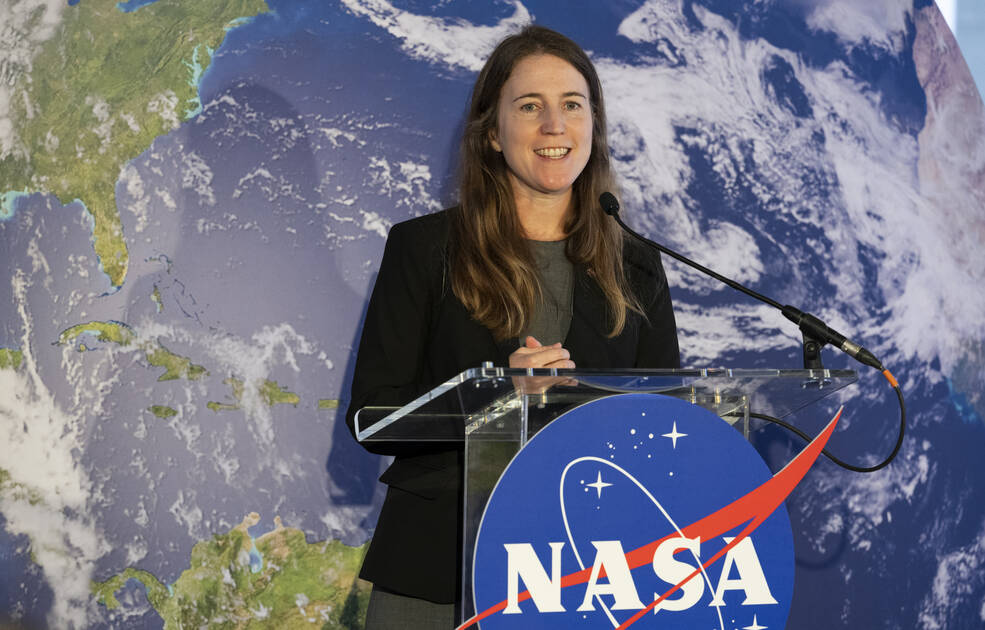NASA held a media roundtable July 20, 2023, from its headquarters in Washington to highlight the agency’s climate work.
From wildfires raging across North America, flooding in the Northeast, heatwaves across the Southwest, and a record hot June, millions of Americans experienced the effects of extreme weather. NASA tracks it all, and shares its data.
“The data is clear: Our Earth is warming. And NASA is committed to empowering scientists, decisionmakers, and people around the world to make data-based decisions when it comes to climate, said NASA Administrator Bill Nelson. “With more than two dozen satellites, instruments aboard the International Space Station, and commercial and international partnerships, NASA uses our unique vantage point of space to observe our planet. To put it another way, NASA is bringing space down to Earth.”
Other NASA experts participating in the discussion were:
- Kate Calvin, NASA chief scientist and senior climate adviser
- Karen St. Germain, director, NASA’s Earth Science Division
- Gavin Schmidt, director, NASA’s Goddard Institute for Space Studies
- Tom Wagner, associate director for Earth Action
- Huy Tran, aeronautics director, NASA’s Ames Research Center
- Carlos Del Castillo, chief, Ocean Ecology Laboratory, NASA’s Goddard Space Flight Center
The topics of discussion ranged from greenhouse gases, NASA’s new Earth Information Center, the fleet of satellites the agency has observing weather-data, how NASA uses surface records to learn more about climate change, how climate change affects oceans, and more.
“NASA’s vast, decades-long array of Earth, atmospheric, and solar data – which are openly and freely available to anyone – provide a comprehensive, real-time history of our dynamic and complex planet. Understanding Earth gives us the means to better protect it,” said Calvin.
Audio of the full briefing is available on NASA’s Youtube channel.
NASA also offers a variety of resources across its websites including:
NASA GISS Resources
Agency Resources
- Climate.NASA.gov
- Agency Climate Strategy Overview
- NASA Español
- JPL Center for Climate Sciences
- GSFC Global Modeling and Assimilation Office
- Langley Research Center
- Ames NASA Earth Exchange
Visualization Resources
Social Media Resources
Climate Explainer Resources
- Temperature Record 101: How We Know What We Know about Climate Change
- The Climate Events of 2020 Show How Excess Heat is Expressed on Earth
‘We Asked A NASA Scientist’ Series
- Why Does Climate Change Matter?
- Are Wildfires Getting Worse?
- Why Is Sea Level Rising?
- Are Hurricanes Getting Stronger?
- How Do We Know What The Climate Was Like Long Ago?
- Is Polar Ice Melting?
Earth Action Resources
- Earth Information Center
- NASA Earth Applied Sciences
- NASA’s Cynthia Rosenzweig Receives 2022 World Food Prize























